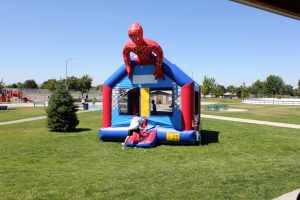A New York father has filed a $4.5 million lawsuit against the makers of a plastic T-ball bat that allegedly mangled his 5-year-old son’s face, leaving him to suffer severe facial injuries and permanent scarring.
The lawsuit claims that the Adjust-A-Hit T-Ball set was defectively designed, according to reports. The boy was injured after a section of the plastic bat, which adjusts in length, came apart.
Once the telescopic bat came apart it shot a jagged piece of plastic into the boy’s face, causing a wound that required more than 300 stitches.
The boy and his older brother were playing with the bat when it fell apart. It’s unclear what caused the bat to snap into pieces.
 The lawsuit claims negligence on the part of Franklin Sports, a sporting goods company based in Massachusetts, according to court documents.
The lawsuit claims negligence on the part of Franklin Sports, a sporting goods company based in Massachusetts, according to court documents.
When an injury is caused by a defective product, the injured person can file what is known as a product liability lawsuit. Product liability lawsuits essentially hold a manufacturer of a product, or the seller of that product, legally liable for for injuries that occur when a product fails to live up to the ordinary expectations of the consumer.
Product liability lawsuits are usually centered around a product that is defective in one of three ways – marketing defects, manufacturing defects or design defects. Marketing defects may include improper labeling or even failing to warn consumers about the dangers associated with the product. A defect in manufacturing happens when a product is not manufactured correctly, which can lead to unexpected risks of injury to a user. Design defects happen when a product is designed in a way that makes it unsafe for how it is intended to be used.
In this specific case, the boy’s family alleges that the design of the bat was defective, making it unsafe for use even though it was used correctly. If it can be shown that the design of the bat was defective, the boy’s father may be able to financially recover for the boy’s injuries. It must be demonstrated that the bat’s manufacturer was negligent in placing the product on the marketplace when it is not safe for use.
 Florida Personal Injury Lawyers Blog
Florida Personal Injury Lawyers Blog










